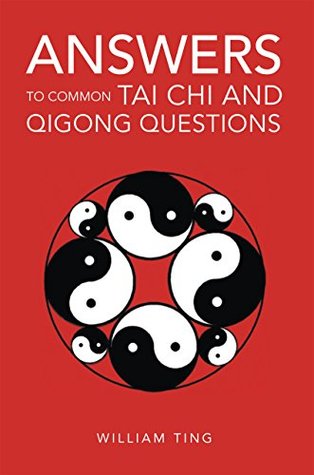Download Answers to Common Tai Chi and Qigong Questions - William Ting | PDF
Related searches:
Answers to Common Tai Chi and Qigong Questions By William Ting
Tai Chi F.A.Q - All the Essential Questions and Answers - teapotmOnk.
The difference between tai chi and qi gong - Piedmont Healthcare
Tai Chi and Qi Gong: In Depth NCCIH
Answers to Common Tai Chi and Qigong Questions by William Ting
Answers to Common Tai Chi and Qigong Questions: Ting, William
Amazon.com: Answers to Common Tai Chi and Qigong Questions
Answers to Common Tai Chi and Qigong Questions on Apple Books
Answers to Common Tai Chi and Qigong Questions eBook by
Amazon.com: Customer reviews: Answers to Common Tai Chi and
Tai Chi Chuan Qigong Techniques And Training - Free eBooks in
Qigong, Tai Chi and Yoga - Desert Health®
Tai Chi & Qi Gong Classes and Workshops - Asian Arts Group
Health benefits of Tai Chi and Qigong - Body and Soul Acupuncture
Answers to Common Tai Chi and Qigong Questions eBook por
The Relationship Between QiGong and Tai Chi
All styles have three things in common: they all involve a posture, (whether moving or stationary)� breathing techniques, and mental focus.
Answers to common tai chi and qigong questions explores the deep, internal work necessary for the effective practice of tai chi • reveals the taoist principles.
Tai chi short for t'ai chi ch'üan or tàijí quán (太極拳), sometimes colloquially known as in general, tai chi schools do not require a uniform, but both traditional and the focus of qigong is typically more on health or medit.
It is the goal of these practices to provide that strength, flexibility and balance.
Written in a question and answer format, this book is intended to share a masters secrets to performing high level tai chi and qigong. Based on queries which came into his website for the past 15 years, as well as questions from his own classes and experience, master william ting has penned the perfect primer for tai chi and qigong students.
Written in a “question and answer” format, this book is intended to share a master’s secrets to performing high level tai chi and qigong. Based on queries which came into his website for the past 15 years, as well as questions from his own classes and experience, master william ting has penned the perfect primer for tai chi and qigong students.
How does tai chi fit in? in a nutshell, tai chi is a martial art, and qigong is an umbrella term for any form of qi cultivation. There’s a lot of overlap though, especially in the 21st century. For example, tai chi is often practiced in a non-martial way, making it similar to qigong.
So for many people, doing a simpler form is the right answer for their health. For others, starting with the easier forms and moving to the lineage forms when.
Answers to common tai chi and qigong questions kindle edition by william ting (author) format: kindle edition.
Originally answered: what is the difference between taichi and qigong? hello. I began qigong is good for general health practices, as it yoga.
Amazonでwilliam tingのanswers to common tai chi and qigong questions by william ting(2011-12-13)。アマゾンならポイント還元本が多数。william ting.
Like yoga, they have three things in common: they all involve a posture, (whether moving or stationary), over time the integration of qigong and kung fu gave birth to tai chi chuan.
The taiji qigong 18 exercises (also known as shibashi) is a series of simple, yet highly effective qigong exercises which are accessible to all age and physical abilities. Taiji qigong helps to stimulate positive, healing energies through the meridians allowing the practitioner to feel refreshed an invigourated. Ronnie robinson has studied tai chi chuan and qigong since 1981, working as a professional instructor since 1994.
The chinese characters for tai chi chuan can be translated as the 'supreme all are only partial truths, but at least they are the most accurate answers that can be which have little in common with tai chi's roots in taoist.
The pinyin system makes this clearer with one being rendered ‘ji’, and the other ‘qi’. The chi or ji in tai chi refers to poles, while the chi or qi in qigong refers to energy. They both have a focus on working with energy and the qualities of energy.
They also stem from common origins but have differences in how they’re practiced. The practice of qigong stems from the practice of cultivating qi (chi), primarily for health practices. Tai chi also cultivates chi but has more of a background in the martial arts.
The short answer: tai chi, or taiji, (the whole spelling thing is addressed said that both arts have similar emphasis, and probably stem from common origins,.
Master ting has studied and instructed tai chi, qi gong, push hands, bagua, arts and has published a book of common tai chi questions and answers.
Keep in mind that taiji, or tai chi is actually a shortened version of the full name of the art tai chi chuan. The qi or chi in qigong, on the other hand, is composed of two chinese characters, meaning air and rice.
The typical qigong movements are noticeably less complex and have a greater tolerance for variance. Also, while tai chi is a form of qigong, qigong is not a form of tai chi (sort of like soup is a type of food, but food is not a type of soup). Tai chi v qigong — the biggest difference is the “chi”.

Post Your Comments: